Showing Spotlights 17 - 24 of 200 in category All (newest first):
 Rain can be considered as prolific a sustainable energy source like energy scavenging from solar or wind. Consequently, droplet-driven energy harvesting devices - which offer a simple structure with low-cost materials requirements - have received considerable attention from the global research community. A recent review comprehensively discusses various methods for harvesting water droplets with their future potential for different applications.
Rain can be considered as prolific a sustainable energy source like energy scavenging from solar or wind. Consequently, droplet-driven energy harvesting devices - which offer a simple structure with low-cost materials requirements - have received considerable attention from the global research community. A recent review comprehensively discusses various methods for harvesting water droplets with their future potential for different applications.
Aug 25th, 2022
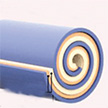 One of the challenges of realizing smart dust concepts, as well as nano- and microrobotics in general, is a lack of equally small on-chip power sources for ubiquitous anytime anywhere operation. Now, researchers have created an on-chip micro-Swiss-roll battery by using a self-assembly process known as micro-origami. The batteries are 3 mm in length and about 178 micros in diameter and the self-assembly mechanism allows for the parallel fabrication of multiple micro-Swiss rolls on the wafer in a single run.
One of the challenges of realizing smart dust concepts, as well as nano- and microrobotics in general, is a lack of equally small on-chip power sources for ubiquitous anytime anywhere operation. Now, researchers have created an on-chip micro-Swiss-roll battery by using a self-assembly process known as micro-origami. The batteries are 3 mm in length and about 178 micros in diameter and the self-assembly mechanism allows for the parallel fabrication of multiple micro-Swiss rolls on the wafer in a single run.
Aug 5th, 2022
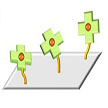 The key to fabricate single-atom catalysts is the confinement of transition metal atoms in the precursor, which remains a critical challenge. Addressing this critical challenge, researchers recently proposed clicking confinement strategy as a new synthesis methodology towards the fabrication of single-atom catalysts. This strategy breaks the restrictions on molecular size or symmetry and significantly broadens the fabrication approaches. It also is of great specificity, ensuring the precise construction of single-atom sites with unique structures or distributions.
The key to fabricate single-atom catalysts is the confinement of transition metal atoms in the precursor, which remains a critical challenge. Addressing this critical challenge, researchers recently proposed clicking confinement strategy as a new synthesis methodology towards the fabrication of single-atom catalysts. This strategy breaks the restrictions on molecular size or symmetry and significantly broadens the fabrication approaches. It also is of great specificity, ensuring the precise construction of single-atom sites with unique structures or distributions.
Mar 17th, 2022
 BATTERY 2030+ is a large-scale cross-sectoral European research initiative bringing together the most important stakeholders in the field of battery R+D to create a strong battery research and innovation ecosystem community. A goal of the project is to develop a long-term roadmap for battery research in Europe. This roadmap suggests research actions towards breakthrough technologies to radically transform the way to discover, develop, and design ultra-high-performance, durable, safe, sustainable, and affordable batteries for use in real applications.
BATTERY 2030+ is a large-scale cross-sectoral European research initiative bringing together the most important stakeholders in the field of battery R+D to create a strong battery research and innovation ecosystem community. A goal of the project is to develop a long-term roadmap for battery research in Europe. This roadmap suggests research actions towards breakthrough technologies to radically transform the way to discover, develop, and design ultra-high-performance, durable, safe, sustainable, and affordable batteries for use in real applications.
Feb 9th, 2022
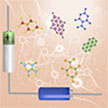 Researchers developed a holistic approach, which predicts both Li-ion storage and supercapacitive properties and hence identifies various important electrode materials that are common to both devices, may pave the way for next-generation energy storage systems. By leveraging the big-data generated by the computational pipeline, the team trains crystal graph-based machine learning models and demonstrates how this data-driven model could be helpful for the rapid discovery of potential materials from other databases.
Researchers developed a holistic approach, which predicts both Li-ion storage and supercapacitive properties and hence identifies various important electrode materials that are common to both devices, may pave the way for next-generation energy storage systems. By leveraging the big-data generated by the computational pipeline, the team trains crystal graph-based machine learning models and demonstrates how this data-driven model could be helpful for the rapid discovery of potential materials from other databases.
Jan 13th, 2022
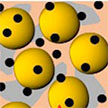 EV manufacturing requires more energy and produces more emissions than manufacturing a conventional car because of batteries. There are many unanswered questions about the life-cycle greenhouse gas implications of electric vehicles, especially related to early estimates of battery production emissions. A new review addresses these questions and the advances in new battery chemistries, plus new insights into CO2 emissions from battery manufacturing.
EV manufacturing requires more energy and produces more emissions than manufacturing a conventional car because of batteries. There are many unanswered questions about the life-cycle greenhouse gas implications of electric vehicles, especially related to early estimates of battery production emissions. A new review addresses these questions and the advances in new battery chemistries, plus new insights into CO2 emissions from battery manufacturing.
Dec 1st, 2021
 Researchers demonstrated that two dissimilar materials - molecular energetic materials and ferroelectrics - can be combined to obtain a chemically driven electrical energy source with high-power density. They obtained chemically driven electrical energy with a high specific power of 1.8 kW/kg and achieve an estimated detonation velocity comparable to trinitrotoluene (TNT) and hexanitrostilbene (HNS). Such a power source could potentially be employed for on-demand energy sources, propulsion, or thermal batteries.
Researchers demonstrated that two dissimilar materials - molecular energetic materials and ferroelectrics - can be combined to obtain a chemically driven electrical energy source with high-power density. They obtained chemically driven electrical energy with a high specific power of 1.8 kW/kg and achieve an estimated detonation velocity comparable to trinitrotoluene (TNT) and hexanitrostilbene (HNS). Such a power source could potentially be employed for on-demand energy sources, propulsion, or thermal batteries.
Oct 14th, 2021
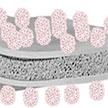 Lithium-sulfur (Li-S) batteries are a promising alternative to lithium-ion batteries because - at least theoretically - they can render 3-6 times higher energy density. In developing Li-S battery technology, researchers have borrowed many components from the mature lithium-ion battery, such as the separator. However, because the working mechanism of Li-S cells is fundamentally different, there is a need for a suitable separator specifically designed for Li-S. Re-engineering the separator can improve the energy density of Li-S batteries.
Lithium-sulfur (Li-S) batteries are a promising alternative to lithium-ion batteries because - at least theoretically - they can render 3-6 times higher energy density. In developing Li-S battery technology, researchers have borrowed many components from the mature lithium-ion battery, such as the separator. However, because the working mechanism of Li-S cells is fundamentally different, there is a need for a suitable separator specifically designed for Li-S. Re-engineering the separator can improve the energy density of Li-S batteries.
Aug 5th, 2021
 Rain can be considered as prolific a sustainable energy source like energy scavenging from solar or wind. Consequently, droplet-driven energy harvesting devices - which offer a simple structure with low-cost materials requirements - have received considerable attention from the global research community. A recent review comprehensively discusses various methods for harvesting water droplets with their future potential for different applications.
Rain can be considered as prolific a sustainable energy source like energy scavenging from solar or wind. Consequently, droplet-driven energy harvesting devices - which offer a simple structure with low-cost materials requirements - have received considerable attention from the global research community. A recent review comprehensively discusses various methods for harvesting water droplets with their future potential for different applications.
 Subscribe to our Nanotechnology Spotlight feed
Subscribe to our Nanotechnology Spotlight feed





